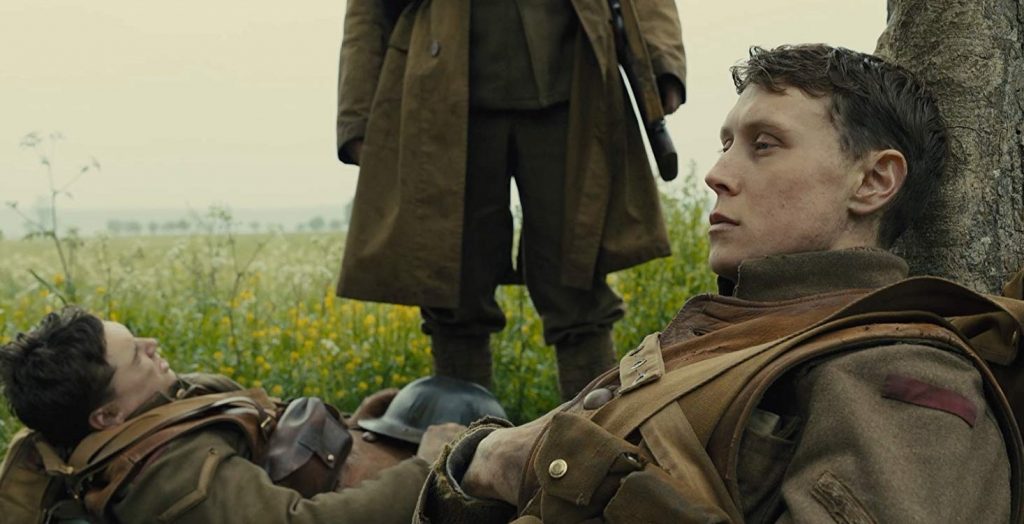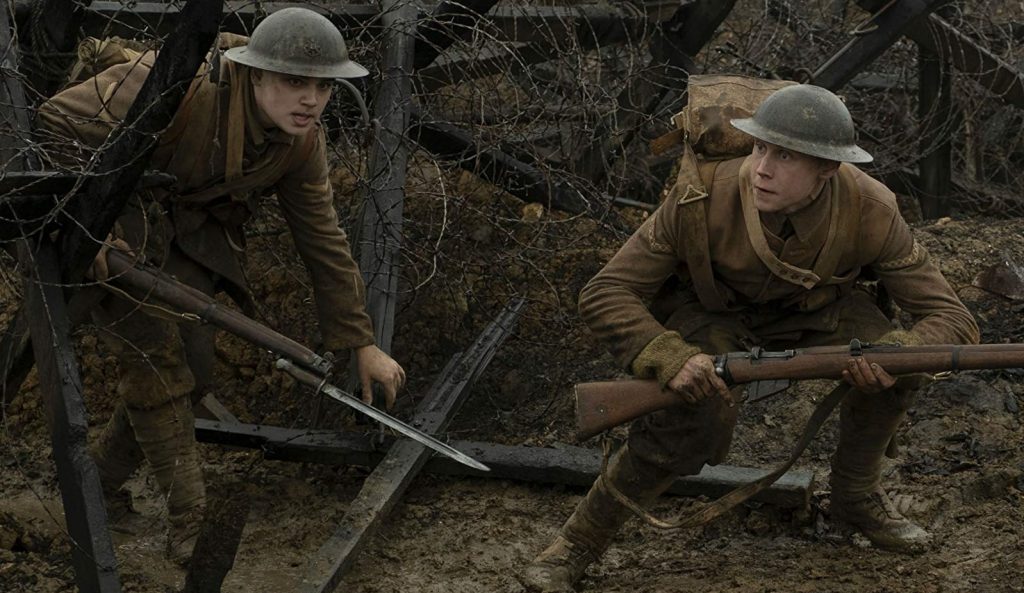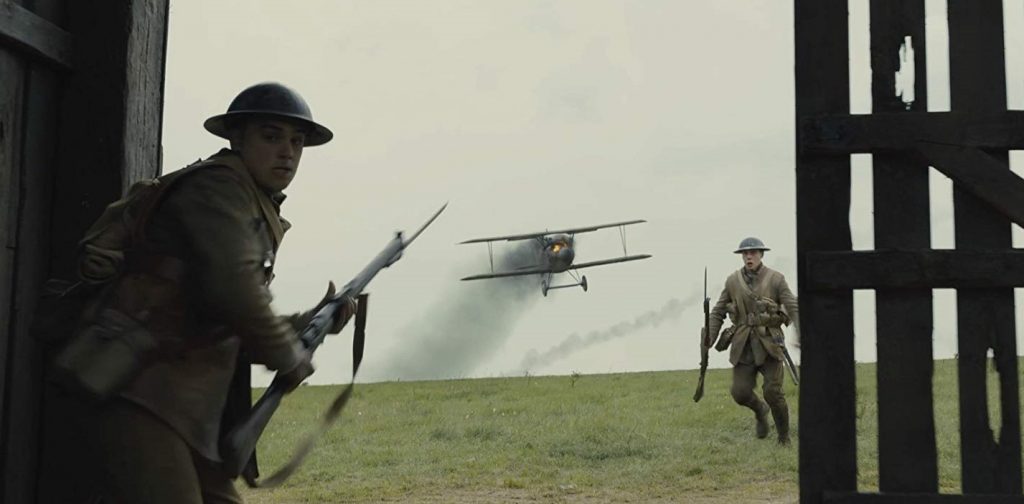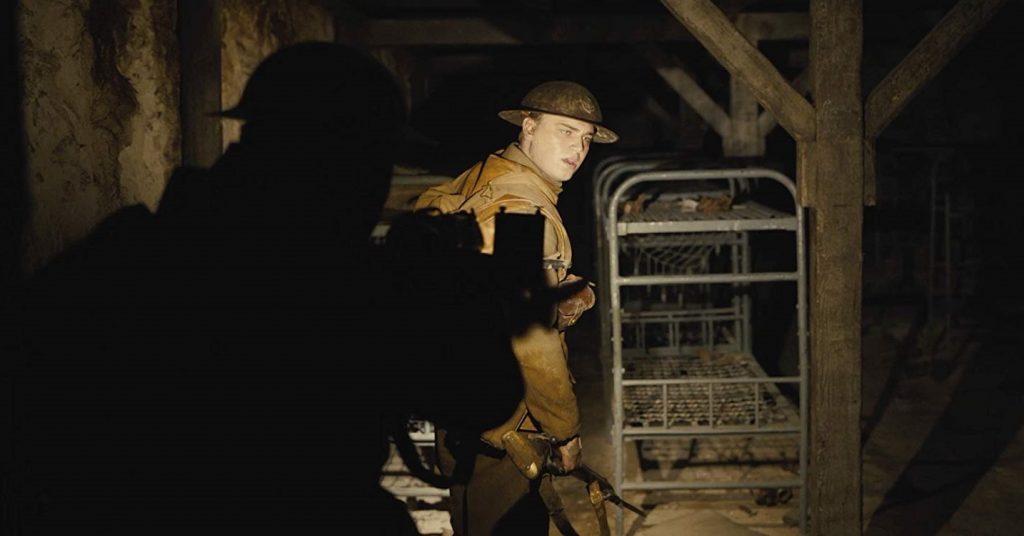
We’ve all seen plenty of WWI epics over the years, including All Quiet on the Western Front, Paths of Glory, Gallipoli, A Very Long Engagement, War Horse, and the recent documentary They Shall Not Grow Old. All of these pictures depict the violence and horrors endured by young soldiers. Additionally, some even show the nastiness displayed by not only the enemy, but also by the soldier’s own superiors. While it is difficult to imagine that any recent film could add anything that audiences haven’t seen before, 1917 manages to do just that. It places viewers alongside the leads in the trenches and tells a story in a new and completely unique way.

The story opens in Northern France with young, inexperienced British Corporal Blake (Dean-Charles Chapman) being assigned to select another man and head out to receive new, secretive orders from their General. Blake quickly picks his friend, Corporal Schofield (George MacKay) and the two are given their very time-sensitive and dangerous mission. It involves traveling many miles across battlefields and enemy lines, all in order to deliver an urgent message to a faraway Colonel readying to send 1,600 troops (including Blake’s own brother) into a German trap and certain defeat. Exposed and alone in the open, the pair do their best to complete the assignment without being killed.

The simple plot actually adds great tension to the proceedings, as the leads are constantly up against the ticking clock. And director/co-writer Sam Mendes (American Beauty, Jarhead, Road to Perdition, Skyfall) also adds a very unusual and clever technical element which sets his film apart from others of the genre. Specifically, he chooses to let the story unfold and play out in its entirety as one single shot. Obviously, there are digital tricks used to allow for the passage of time and hide various cuts, but the presentation allows viewers to follow along as if they are walking along and reacting to events with the two young men.
While the one-shot technique may initially seem gimmicky, it is cleverly used to help viewers empathize with the leads. It also adds a remarkable amount of tension to the proceedings. Admittedly, since the approach only allows for a condensed period of time with its heroes, we don’t get to know the two leads quite as well as we might using a traditional narrative structure. And perhaps viewers won’t feel as close to them as a result. Yet, the unusual process still works remarkably well. The camera stays tight on these soldiers and doesn’t explicitly reveal who or what is around them, allowing for drama in every scene. Even views of the protagonists simply poking their heads out of the trenches to try and see what’s on the horizon are anxiety provoking.

Much credit must also be given to cinematographer Roger Deakins (Fargo, No Country for Old Men, Skyfall, Sicario, Blade Runner 2049) who has gorgeously lit and filmed the extended and elaborately staged events. Although it never distracts from the story itself, the camera always seems to be wowing with something visually impressive. It smoothly follows the characters and moves over water and through other impediments as they make their way, and always provides a clear sense of geography. As shots extend, they move from outside environments to darker indoor spaces, with the focus and lighting always sharp. The movie looks particularly stunning as one character is forced to run through the ruins of a city at night lit by smoldering fires. This film is a technical marvel.

While viewers may be forced into empathizing with the characters through experience and not by traditional character development, this is still a tense and consistently thrilling war picture. All aspects of it are exceptional and, in the process, 1917 brings a completely new vantage point, giving a real sense of what it might have been like for those walking in the trenches during WWI. Only time will tell, but this reviewer’s first instincts are that the movie will likely stand as another remarkable film depicting one of the most devasting wars in history.


